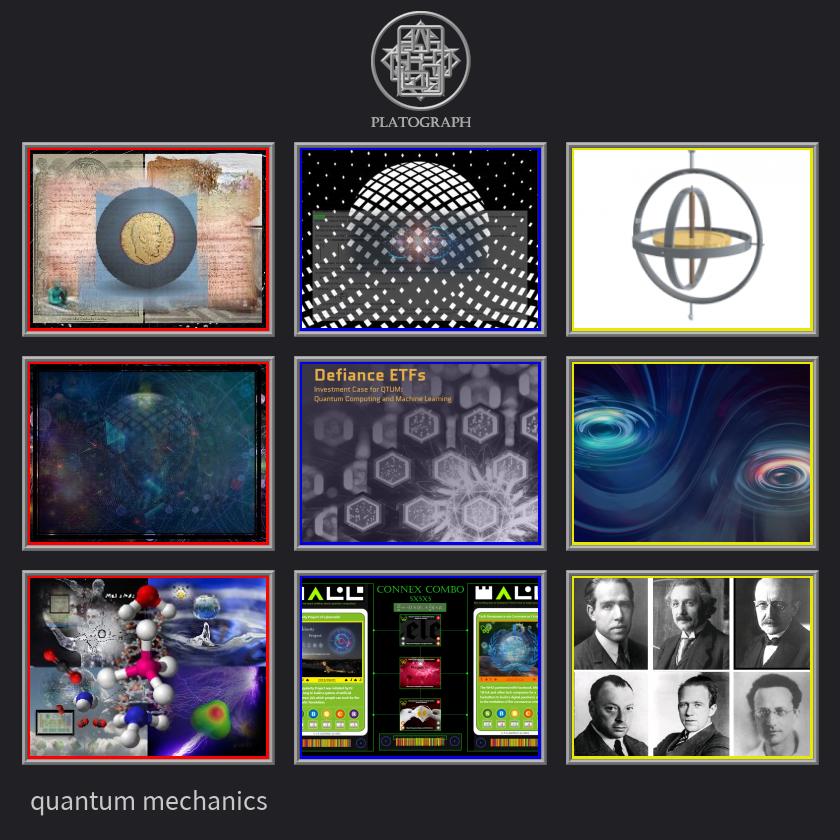
Certainly! The discussion covers various topics ranging from Archimedes' work on solid geometry to quantum mechanics and its applications in different fields. Here is a summarized overview:
D1: Archimedes Mechanics for Math Architecture
- Archimedes published "On the Sphere and Cylinder" which explored surface area and volume calculations for spheres and cylinders.
- His work inspired the development of mechanics and calculus.
D2: Matter State & Molecule Structure
- Quantum chemistry theories such as the Valence Bond and Molecular Orbital models analyze the structure of molecules and the properties of their eigen-solutions.
- Concepts like symmetry, polarity, chirality, and statistical mechanics are involved.
D3: Crypto/Green Quantum Dilemma/Puzzle
- This discusses the potential of using quantum computing to enhance blockchain energy-efficiency and transaction speed without compromising encryption systems.
- It highlights the puzzle of balancing information, energy, and entropy in the context of quantum computing.
K1: Connex-Combo
- Explores how quantum computers could be utilized to prevent future pandemics.
K2: Defiance ETFs - Investment Case for QTUM
- Focuses on investment opportunities related to quantum computing and machine learning.
K3: Quantum Communication Technology
- Discusses advancements in quantum communication technology.
H1: Quantum Mysticism
- Explores the philosophical implications of quantum mechanics, referencing Einstein's question regarding the existence of the moon when not observed.
H2: Gyroscope
- Describes the functionality of gyroscopes in measuring and maintaining orientation and angular velocity.
- Mentions solid-state ring lasers, fiber optics, and quantum gyroscopes.
H3: Quantum Entanglement
- Explains the phenomenon of quantum entanglement, highlighting that it cannot be used to transmit information instantaneously.
In summary, the discussion encompasses a wide range of topics including Archimedean geometry, quantum mechanics, quantum computing, investment opportunities, philosophical implications, and technological applications like quantum communication and gyroscopes.
在上述文獻中,介紹了不同的主題,包括數學與建築的關係、物質狀態與分子結構的研究、量子計算在區塊鏈和加密系統中的應用、以及量子力學中的一些概念和應用等等。
其中,有關數學與建築的研究提到了阿基米德對於球體和圓柱體的表面積和體積計算方法的貢獻,這些結果對於固體幾何學和力學及微積分的發展具有重要的啟發作用。
在物質狀態和分子結構方面的研究則涉及到量子化學以及分子軌道理論和化學鍵模型等,通過研究薛定諤方程的本徵解和非對稱狀態的叠加等幾何和拓撲性質,來探索分子的對稱性、極性和手性等特徵,並且在統計力學中研究分子的集合行為。
在加密和量子計算方面的研究關注的是如何提高區塊鏈的能效和交易速度,同時不破壞加密系統的安全性,這是一個關於信息、能量和熵的重要問題。同時也討論了量子計算在預防未來疫情擴散、機器學習和量子通信技術方面的應用。
在量子力學方面的研究則涉及到量子的神秘主義,包括對質疑量子力學的早期科學家如愛因斯坦提出的問題的探討,包括“月亮只有被觀察時存在嗎?”,以及著名的哥本哈根解釋等。同時還介紹了陀螺儀的原理和應用,以及量子纏結的概念和其在科學中的應用。
總而言之,這些文獻涵蓋了不同領域的研究,包括數學、物理、化學和加密等,並介紹了相關的理論、方法和應用。這些研究為我們理解世界提供了新的視角和知識基礎。
心得:量子力學是物理學的分支學科。它主要描寫微觀的事物,與相對論一起被認為是現代物理學的兩大基本支柱,許多物理學理論和科學,如原子物理學、固態物理學、核物理學和粒子物理學以及其它相關的學科,都是以其為基礎。
量子力學的應用又包含:電子器件、計算機、宇宙學、化學、資訊學。其中資訊學、計算機和電子器件是我主要探討的項目。
計算機相比於電晶體等電子器件,量子計算機的研製則更為前沿。在一些特定算法下,量子計算機的速度會比古典架構的計算機快成千上萬倍(比如量子退火算法)。
量子系統擁有一種特性,即對於量子數據的測量會不可避免地改變數據,這種特性可以用來偵測出任何竊聽動作。量子態具有量子疊加的特性,理論而言,量子電腦可以達成高度並行計算,其計算速度有可能以指數函數快過普通電腦。另外,應用量子纏結特性與古典通訊理論,量子遙傳能夠將物體的量子態從某個位置傳送至另一個位置。這是正在積極進行的一門學術領域。
量子力學涉及領域廣闊,自訂的自主學習主題為電子與量子計算應用,下次希望以電子系相關的量子計算作更進一步的主題探討。
